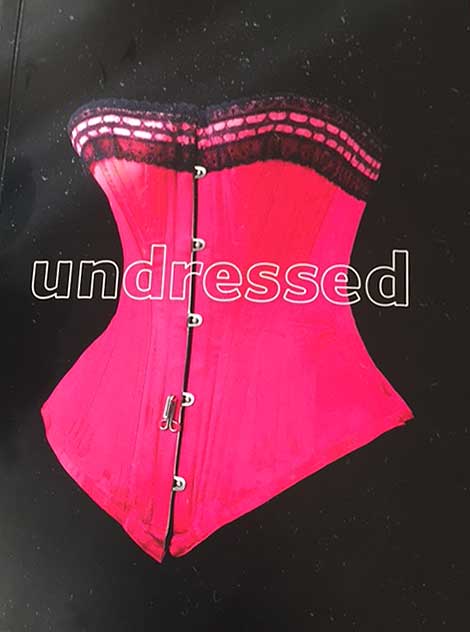A revelation on female design shapes in recent historical developments
A recent visit to the excellent V&A exhibition in London with the title Undressed : A brief History of Underwear ,
caused me to have a revelation and realisation about the exposure of the female body and the variation of natural shapes.
For long periods of times the female body has been a victim of compliance with the sexual and sociological needs of the times. That held for many centuries and years, preceding the II WW.
All these unhealthy corsets, pressing the waist with metal busks and whalebones shaped and deformed the body following the current trends. The lower part of the body was the victim of hiding under a variety of crinolines or bustles etc.
All these were shed and abandoned together with the war paraphernalia.

Although this fact is widely known, the influence of the freedom that the two great wars allowed women to have in the way they dressed, moved or exposed their body, has not been identified as a factor in the sequence of a great number of impacts this did have, at the end.
One of these has to do with the way this need was addressed by designers and clothing experts throughout the years, following the wars, and how the industry that developed complied.
If we stoop into it, we will acknowledge the prevalence of a type of garment with a particular design feature, what we call, the Dress.
Modern Dress allowed the fabric to hug the body, and the garment to move stressing its shape, by following its natural contour, from the shoulder, the bust, the waist, down to beautifully shaped buttocks.
It projected the beautiful movement and image a well shaped body could give.
But even if it was not such a well shaped body, this freedom of movement was envied by all, and so the dress was adopted along with the fit it provided in many other types of garments.
When this happened under the Haute Couture, it was a beauty of the eyes, as it was realised under the number of personal fittings, and the skills of the couturiers.
However, this was not followed with a similar fidelity to the body shape in ready to wear. The challenge of good fit is still unconquered there.
Despite a number of technological innovations, in the wide ready to wear industry the challenge has led to a dramatic betrayal of the consumers’ expectations.
I will not engage into the reasons and the development of this unresolved issue for the industry, to nowadays.
I will only try to recount the story of how my mother Ismini Argyropoulou, who was a very innovative and practical person and an excellent dressmaker, tried to find a way to resolve it, when she started teaching Pattern Making skills in her school in the 70’s .
Now I realise, and I owe it to her to record, what she was doing, when she was experimenting with all the other teachers she was working with.
They were trying to perfect the way they worked, so that they could make the dress to fit any female body shape smoothly.
That was a great challenge, as it had to abandon the haute couture approach, that relied only to personal presence or a similar stand, with many fittings.
They had to get it standardised with geometrical rules to fit the majority of the female shapes, by only using their particular measurements.
And they did! With the unique Dress making approach!
And then it was applied and tried to tens of thousands of women, with the cooperation of inspired teachers that helped with their feedback to confirm or adjust whatever was deemed necessary for the process.
When I was personally involved in the 80’s I witnessed, that what they were doing, worked easily and quickly but I realised that it required standardisation and expanding into the lower part of the body, in blending the two features of the female part of the body above and below waist, under geometrical and mathematical rules.
This in short, is how the AB patents came about and the Telestia methodology followed.
Witnessing the problems that the clothing industry faces today in rising to this challenge, I wonder, how the Design world failed to recognise this great need of women to respect and honour their natural body shapes.
By studying the phenomenon, one can find many reasons and explanations.
This revelation at the V&A made me see, clearly this route of women garment design in a wide perspective.
The way we dressed has changed dramatically and took a road of no return, but this simple need is not catered for widely, yet.